Today’s book review is about Etiquette Guide to Japan by Boye Lafayette De Mente.
This book gives a fantastic insight into both historical as modern Japanese customs and daily life in Japan.
QUICK LINK
ETIQUETTE GUIDE TO JAPAN BOOK NOTES

TEST REPORT
ABOUT THE WRITER
Boyé Lafayette De Mente was an American author, journalist and adventurer who wrote more than 100 books mainly related to the culture of Japan and the Japanese language.
Actually, he wrote the FIRST EVER books on the Japanese way of doing business and introduced the now commonly used Japanese terms wa, nemawashi, kaizen, tatemae-honne, shibui, sabi and wabi to the outside business world.
During the 1950s, De Mente served in a variety of editorial positions with publications based in Tokyo, including Preview Magazine, Far East Traveler, and The Japan Times.
Boyé Lafayette De Mente sadly passed away in May of 2017 in the US. He was 88.
ABOUT TUTTLE PUBLISHING
Since 1948, Tuttle Publishing has been a leader in publishing books on the culture, arts, cuisines, languages and literature of Asia, so if there is one place to start your research, it’s with them.
Most of their books go deep into the country’s traditions, customs and etiquette. Super interesting and useful to know when you’re visiting or going to live in there!

ABOUT THE BOOK
‘Etiquette Guide to Japan’ is all about the written and unwritten ‘rules’ of Japan that will give you thorough understanding of Japanese etiquette.
This will, as the writer puts it, ‘smooth your experiences and help avoid embarrassment‘ when visiting or living in the country. The book gives an insight into the customs of this fascinating society and is, apart from very educational, also entertaining to read as an outsider.
If you think about visiting Japan, whether as a tourist or for business, this book will give you a great understanding and appreciation of the many aspects of the Japanese etiquette and will make it just a bit easier for you to communicate.
Topics than are addressed vary from notes on the Japanese language and some historical background to the use of names, titles and all the public and business protocols of meeting people, dining and public transportation.
The book also goes into typical Japanese customs, such as the importance of gift giving, the tea ceremony protocol and the etiquette around temple & shrine visits, as well as many other social and business interactions you might encounter.


TRAVEL WITHOUT LEAVING HOME?
You don’t always need to be physically on the road to enjoy the beauty of destinations from all around the world!
From vintage travel posters to beautifully displayed souvenirs and home decor items inspired by your favourite places and from travel journals and crafts to exploring world recipes, music and dance.
With our creative articles you’ll get some fresh ideas on how to bring the world closer to the comforts of your own home.
DESIGN & ILLUSTRATIONS
The chapters in this book are nice and compact and often preceded by a black-and-white page-wide photograph of the topic discussed.
This makes the book easy to read, also because the clear writing style of the book makes it easy to digest the often complex etiquette of the country.


FAVOURITE INSIGHTS
While you don’t specifically need this book to make your trip to Japan a successful one, it’s definitely interesting to read up on the background of some of the most common habits, rituals and etiquette rules.
The Japanese are usually very open to foreign visitors and won’t blame you if you don’t follow exact protocol, but in my experience you’ll definitely score some bonus-points if you show you’ve prepared yourself and know how to show respect.
The book doesn’t just describe the rituals you’ll come across, but you get the change to read a bit about the ideas behind these rituals as well, so you’ll definitely get a good insight in Japanese life and behaviors.
At the back of the book, you’ll find a glossary of useful terms around the Japanese culture and etiquette, and there is an addition IT glossary, which takes you through the latest technology-related words and expressions used by Japanese today.


FAVOURITE QUOTES
“Arriving in Japan for the first time is an unforgettable experience, exhilarating and enlightening – but at the same time confusing. Over the centuries, this island nation has developed its own elaborate set of formalities and manners.”
“Since Japanese etiquette is a product of the country’s culture and history, learning about it and interacting with the Japanese ‘inside’ their etiquette gives you an insight into their character and personality – which is the most valuable thing you can get from a visit to a new country.”

WHICH BOOK TO READ?
The Travel Tester loves to review books that teach you something about yourself or the world around us.
From travel guides and stories to books about business and self-development and from cultural stories to cook books from kitchens around the world… if it looks interesting to us, we’ll test it!
No matter where you’re going, with our reviews you’ll know exactly what to read next!
TEST RESULTS
APPROVED!
I found the book well-researched (not a surprise looking at the writer’s history and line of work) and very interesting to read for anyone with an interest in the ‘real Japan’.
That said, Boyé Lafayette de Mente hasn’t taken the opportunity to mention even one personal experience and that makes the whole book feel a bit ‘cold’. Very well-written, very analytical and factual correct, perhaps a bit outdated here and there, but NOT personal at all.
I also felt that often the book was a bit dated (it was published in 1990, and updated in 2008, so still about 10 years old) and that you could clearly read that the book was written by someone who is quite old (no disrespect meant here, but still…) and just not so up-to-date with life of the younger, and a bit less traditional, Japanese demographic.
There was one chapter where the author writes about the use of mobile phones in Tokyo, and this part just made me laugh out loud: ‘There is no word or short phrase for it except to say: when moving through crowded areas, like train stations, most people have their eyes affixed to screens of mobile devices, utterly oblivious to the pedestrians and traffic swirling past. Some of the violators ride bicycles with one hand on the handlebar, the other holding a smartphone… with their eyes only focused on the screen (…) Nearly every every Japanese urban dweller can recount their personal experiences’.
And then he goes on about why people look on their phones so much and explains into details what smartphones are and what functions they have. Haha, ok, grandpa. Welcome to the 21st century!
Don’t get me wrong, I did enjoy reading the Etiquette Guide to Japan, as I am a bit obsessed with Japanese culture and loved how the writer was clearly very knowledgeable about the country and its customs, but it could have done with a bit more soul.
Look & Feel: 6/10
Practical Use: 7/10
Contribution to Self-Development: 7/10
Value for Money: 7/10
Click here for more information about the review ratings we use on The Travel Tester.

WHERE TO TRAVEL NEXT?
There is so much to explore in the world, how do you decide where to go next?
The Travel Tester is all about mindful travel and we love matching your passions to destinations on earth. So whether your travel for food, nature, creativity, history, culture, innovation, adrenaline, good karma or personal growth, we’ll have suggestions for you wherever you go.
Click the button below for more information and all our travel guides:
PRACTICAL INFO
BOOK INFORMATION
Title: Etiquette Guide to Japan
Subtitle: Know the rules that make the difference!
Author: Boyé Lafayette de Mente (Revised by Geoff Botting)
Illustrations: N/A
Translation: N/A
Publisher: Tuttle Publishing
Language: English
Number of Pages: 192
First Release: 2015
ISBN: 9784805313619
DISCLAIMER
This review contains a gifted book.
Read our full disclaimer, privacy policy and code of ethics here.
Find a complete list of our partners here.
Interested in working together? Please reach out after reading this page.
TUTTLE PUBLISHING JAPAN LIBRARY
We’ve reviewed all above books! You can find all book reviews here >
Visit The Travel Tester Shop for more unique travel-related gifts!

DISCOVER UNIQUE TRAVEL GEAR & GIFTS
In The Travel Tester shop, you will find our favourite travel products and original gift ideas.
Whether you’re looking for the best travel gear, gadgets, electronics, packing solutions, clothing, shoes, travel books, health- or beauty products… we’ve made a personal selection for you!
We’ve also included our favourite tech items used to create this blog, as well as material that can help you in your self-development, such as interesting books and courses.




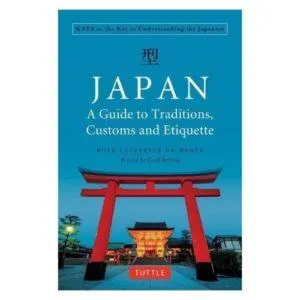

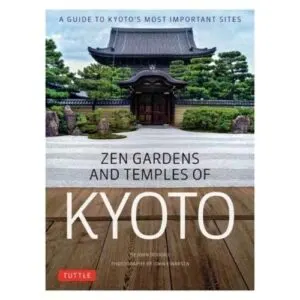

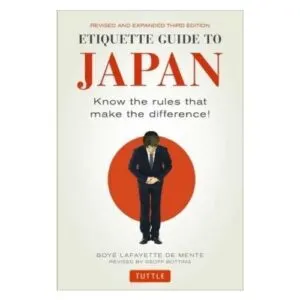
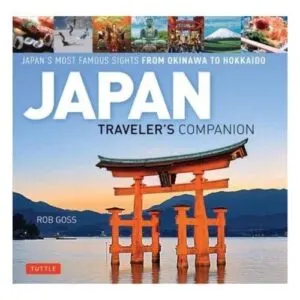




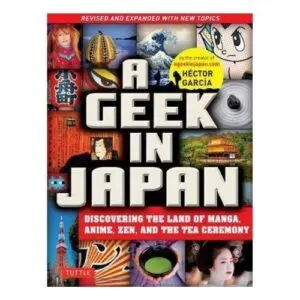









Jared James
Wednesday 1st of April 2020
I am love reading about japanize books, thanks for sharing :)
Halal Food Gastro
Friday 6th of July 2018
This seems like such a good read, its fascinating to see the differences between cultures.
Ryan K Biddulph
Friday 29th of June 2018
Awesome review Nienke. I learned how Japan is so different from the rest of the world in many regards from my wife. She taught English in Hiroshima for a year. She loved it and noted how Japanese culture is a 180 from the US in many regards. Deferential folks, emphasis on community....definitely a change up from my loud, individualist US neighbors LOL.
Nienke Krook
Thursday 2nd of August 2018
Ahw, that must have been an amazing experience! I still would love to live in Japan for a while. One day!